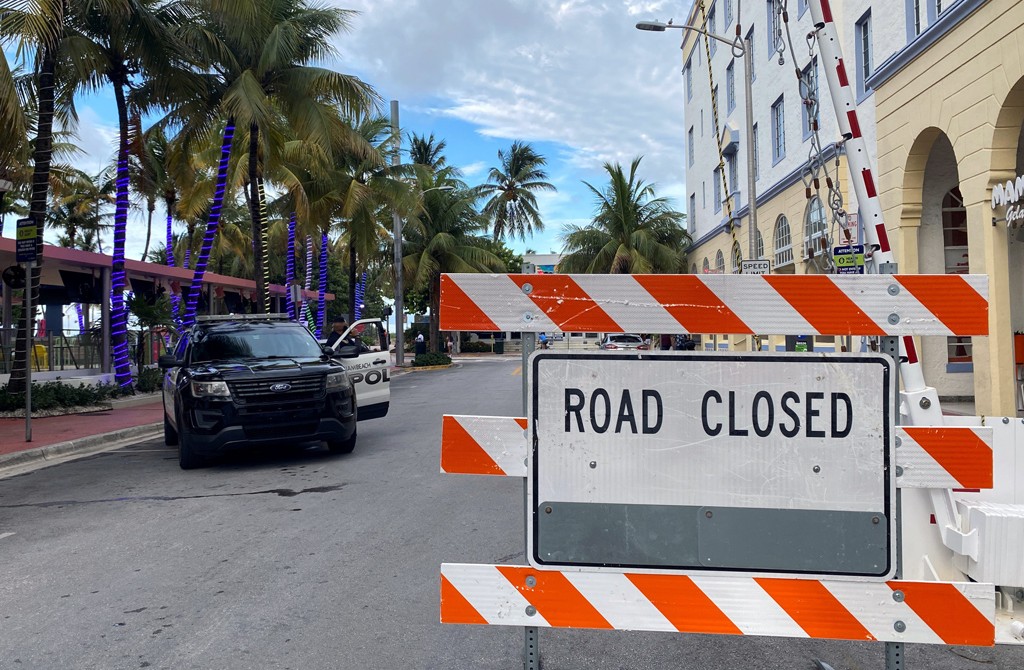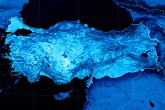In a quote often credited to Winston Churchill, he said, “Americans will always do the right thing – after exhausting all the alternatives.” For Churchill, what really mattered was “doing the right thing” at the end. That was a defining characteristic of America.
However, since Churchill pointed out these characteristics, things have changed a great extent. In fact, recently what defines America becomes not doing “the right thing” but “trying everything else.”
With the COVID-19 crisis and its impacts on the U.S., we have seen that the humanitarian and material costs of “not doing the right thing” and “doing everything else” can become a tragedy for America. American cinema is full of characters that go through this tragedy. One of the most important portrayals of it was seen in Steven Spielberg’s “Jaws” (1975) and Jeannot Szwarc’s “Jaws 2” (1978).
In this classic American thriller sequel, what creates this tragedy is the tension between the hero of the movie, Police Chief Martin Brody of Amity Police Department, and the administration of the island town of Amity in regards to the appropriate response to the emerging threat of sharks.
In “Jaws,” despite the warnings of Martin Brody following several incidents that indicated the presence of a killer shark around the island, the town administration, specifically the mayor, demonstrated an eagerness to make the town available for tourism for Independence Day celebrations on July 4.
When Martin tried to explain the threat the shark poses to the town after the first attack and closed the beaches, the mayor challenges him. According to him, Martin was rushing into something serious by making that decision.
With the help of the coroner, who changed his first observation of the possible cause of death from a shark attack to a boat accident, the mayor persuaded Martin not to shut down the beaches. He said “Amity is a summer town. We need summer dollars. If they can’t swim here, they’ll be glad to swim at the beaches of Cape Cod, the Hamptons and Long Island.”
Other administrators also said they never experienced trouble in the waters of Amity before. The mayor warned Martin of the panic that publicizing the incident as a shark attack could create in the town. According to him, “it is all psychological.”
Eventually, the mayor pushes back Martin Brody and on the following day the shark appeared close to the beach and attacked and killed a child. However, even this incident did not end the debate. Both the administration of the town and business owners tried to challenge Martin and objected the closing of the beaches.
Although Martin thought that it would be necessary to close the beaches until they killed the shark, the mayor decided to keep it close only for 24 hours. After fishermen caught a shark in the waters, the Mayor and the town council declared an early victory and launched the normalization process.
However, the expert that Martin brought to town from the Oceanographic Institute was more cautious and did argue that there could be a second shark in the waters of Amity. However, his scientific expertise on sharks was also ignored by the mayor, which led to the death of some fishermen in the waters.
After spotting a tooth of a shark in a fishing boat, the scientist warned the mayor that there could be more deaths if they don’t close the beaches and take precautions. However, the mayor one more time rejected to take any steps.
The mayor told the scientist that the town “depends on the summer people” for their livelihood and the scientist really doesn’t understand the real problems of the town. The mayor argued that they cannot close the beaches on July 4 because it is bad for business. What the scientist warned about did happen during July 4 celebrations and a shark appeared one more time in the waters of Amity and killed more people.
The scenario is more or less similar in “Jaws 2.” This time after several incidents in the waters of Amity, Police Chief Brody one more time tried to warn the administration of the town to close the beaches. He referred to his previous experience with the sharks.
However, his attempts were pushed back by the real estate developers on the island and the town council. When Chief Brody was becoming cautious, he was accused of being an alarmist and fired from his post.
The photos of the shark that Martin got from the cameras of the divers also did not change the attitude of the council members. According to them, it “could be anything.” Once again, this ignorance and willful negligence of the impending threat to the town led to the death of several people.
In both “Jaws” and “Jaws 2,” the killer sharks were killed by Chief Brody eventually, however, only after the death of several people. In fact, in “Jaws,” the mayor himself persuaded people to get in the water when some of the beachgoers were intimated after the rumors about a killer shark in the sea.
After the tragedy on the beach, he regretted not listening to the warnings of the scientist and police chief, however, he tried to console himself by saying that he wasn’t trying to endanger the lives of the people but he was thinking with the best interest of the town in mind.
Normalization?
Now, does it sound a little familiar? Since the beginning of the COVID-19 crisis, there has been so much debate about the “opening” of the economy and the “normalization” process in some American states.
In March some of the states were already the epicenters of the outbreak. There were warnings by experts that this could spread to other states. However, most of these other states did not take precautions and instead launched the opening process, despite the warnings. Very similar to the town council in “Jaws,” the governors of these states also asserted that normalization is important for the economy of their states. They called the scientists who pointed out the risks, alarmists.
Florida Gov. Ron DeSantis, for instance, refused to shut down beaches during the spring break, when the pandemic started to hit some of the states in the U.S. Later these spring breakers were pointed out among the most critical spreaders of the disease in other states.
He only shut the beaches down in April but soon after he made a statement saying that Florida flattened the curve. Despite another set of warnings before Memorial Day, he opened the beaches again.
On May 20, he made a statement bashing the “alarmists” and journalists and declaring victory against the outbreak. In this statement he said: “Part of the reason is that because you got a lot of people in your profession who waxed poetically for weeks and weeks about how Florida was going to be just like New York, wait two weeks and Florida’s going to be next just like Italy, wait two weeks. Well hell, we’re eight weeks away from that and it hasn’t happened.”
The tragedy was, soon after this statement, Florida became the hotspot of the outbreak in the U.S. For the last several days, it has reported more than 10,000 new infections. Of course, the governor of Florida was not alone in this failure.
The governor of Texas, Greg Abbott, was also one of the administrators that tried to open the economy of the state earlier than other states. He also resisted to announce a stay at home order and instead asked the Texans to remain in place, a vague and insufficient order.
When asked about its meaning, he made it more confusing by saying: “Well candidly, when people talk in terms of shelter in place, what shelter in place really means as a term of art, would mean that wherever you may be at a particular time, you need to take shelter immediately right there. Whether you are at your home or some other location or in a roadside ditch, wherever you may be, you’re supposed to take shelter because of something like a tornado would be coming. This is not a stay-at-home strategy. A stay-at-home strategy would mean that you have to stay at home, you cannot leave home under any circumstances.”
After the reopening in the state, the number of coronavirus cases skyrocketed and hospitals were overwhelmed by patients.
When U.S.’ top infectious disease expert, Dr. Anthony Fauci, criticized some states for opening too soon and skipping the guidelines of the Center for Disease Control (CDC), Abbot’s lieutenant governor bashed Fauci and said they are “skipping to listen.” After months he ordered people to wear masks, however, many public health experts agree that it is a little too late.
Some other governors disregarded the opinions of public health experts amid the outbreak and downplayed the warnings. For instance, Georgia Gov. Brian Kemp banned cities in his state to order people to wear face masks.
Oklahoma Gov. Kevin Stitt, who rejected to wear masks, tested positive for the coronavirus. For some state governors, it was about the economy of their states. For others, it was about what masks represented in the U.S.
Face coverings to prevent the spread of the disease almost turned into an ideological issue in the country. In some instances, some Americans started to consider the masks as an infringement to their freedom and liberties.
In Utah, a public hearing on schools was canceled after the parents of a school district protested the decision of making their kids wear masks. The parents filled the hearing room with no masks on.
As these protests and resistance to masks and public health experts’ warnings continue, the numbers of coronavirus cases continue to increase in the U.S. For the past week, the average daily increase in the number of COVID-19 patients was around 60,000.
Hospitals in some states experienced shortages of personal protective equipment (PPE) for medical staff. The administrations in these states were apparently not well prepared for a potential outbreak in their own states. Despite this bleak picture, they continue to resist the warnings and guidelines of experts and scientists.
So these series of failures remind us of the failures of the local administrators in “Jaws.” This time the threat is not coming from a shark in the ocean but from a virus in the air or on surfaces. The experts of this disease and public health experts are trying to educate masses about this threat.
To diminish the cost
However, resistance to the expert’s knowledge is also present in this outbreak. The emphasis on the economy of the towns, the downplaying of the threat, the disrespect and ignorance to the expert’s knowledge and the declarations of premature victories are more or less similar.
In fact, America amid the COVID-19 crisis started to look more like the town of Amity in “Jaws.” And unlike the movie, a turning point did not happen for the administrators to change their opinion and abandon their stubbornness yet. The previous outbreaks that took place in New York, New Jersey and some other states were downplayed by most of the other states.
It is, in fact, a tragedy for these states to “try everything else” that would cost the lives of so many people. The more tragic point is that we still don’t know when these states will do “the right thing” that would end this outbreak. As time passes, there is an increasing degree of skepticism on whether they can do “the right thing.” And it is not only about the COVID-19 pandemic anymore.
[Daily Sabah, 20 July 2020]



